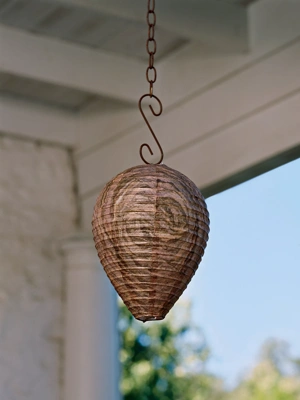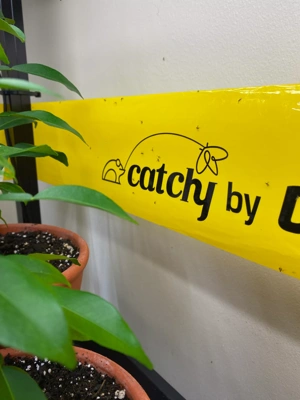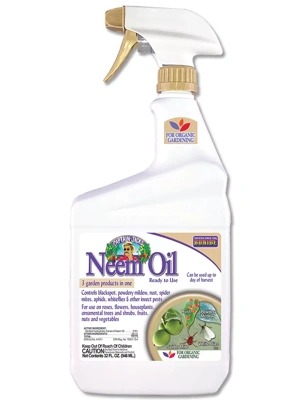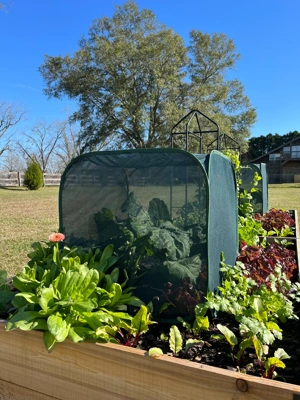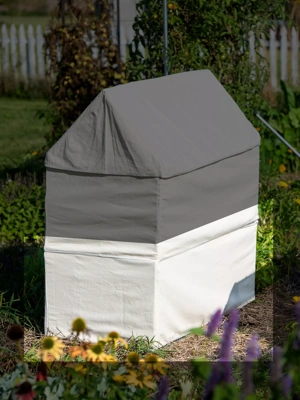What You Need To Know About Yellow Jackets

A German yellow jacket queen (Vespula germanica), starting to build a nest. Photo: Rescue pest control
Yellow Jacket 101
What are yellow jackets?
Yellow jackets are social insects found worldwide that resemble bees in their black and yellow striped markings. They are primarily carnivorous (eat small insects), but will also occasionally feed on fruits and flower nectar. Yellow jackets live in large groups called colonies, which consist of a queen, drones, and workers.
What is the difference between yellow jackets and paper wasps?
The yellow and black coloring may appear similar, but paper wasps have more slender abdomens and longer legs that dangle down while they are in flight. Their nests are usually built under eaves, while yellow jackets most often will build their nests in the ground.
The appearance of yellow jacket and paper wasp nests also differs. Paper wasp nests look like honeycombs with multiple openings, while yellow jacket nests have a single opening.
When is yellow jacket season?
The season begins anywhere from March to May (depending upon the climate) and lasts through September or October. The queens emerge in the first warm days of spring to select a nest site to lay eggs, and the worker population grows to maximum size in late summer and early fall.
Where do yellow jackets make their nests?
Yellow jacket nests are most often built underground. The nest has a single entrance, usually no larger than the size of a nickel. Other locations include wall voids of buildings, hollow trees or logs and attics. There is also a species commonly referred to as the "aerial yellow jacket" which makes nests in trees.
Do yellow jackets keep the same nest year after year?
In most cases, no. The nest decomposes after the season and is not reused. In some warmer climates, however, perennial nests have been found to exist.
Do yellow jackets serve any beneficial purpose?
Yellow jackets feed on insects, including pest insects, such as houseflies, caterpillars and grasshoppers. Fall webworms and codling moths may be taken as prey by several yellow jacket species. Therefore, if you find a yellow jacket nest that is nowhere near children, pets, or living spaces, it is recommended to just leave them be!
How to Get Rid of Yellow Jackets
How can you prevent yellow jackets?
Prevention is the most effective option! A few ways to discourage yellow jackets from setting up shop (er, nest):
- Keep a tight lid on household trash bins, and keep bins away from decks, porches, doors, etc.
- Yellow jackets are very territorial. Hang an imitation nest to dissuade yellow jackets from arriving and building a live on.
- Keep piles of brush, leaves, or other potential nesting material away from your home and driveway. This is important wildlife habitat (!) but keeping it set further away from your home wiill reduce your interaction with yellow jackets.
- Spray a mixture of dish soap and essential oil around lawn areas where yellow jackets are likely to nest. Peppermint oil is an especially effective deterrant for a number of pests.
Can you remove a yellow jacket nest?
Yes — aerial nests can be removed at night after covering the entire nest in a plastic bag, and ground nests can be vacuumed out with a large shop-vac. However, the safest way to completely remove a yellow jacket nest is to contact a professional who will undoubtedly have the proper safety gear/clothing to do this.
How to Treat a Yellow Jacket Sting
How do you treat a yellow jacket sting?
If the sting is to your throat or mouth, seek medical attention immediately because swelling in these areas can cause suffocation. Otherwise:
- Wash the wound carefully with soap and water. This will help remove the venom. Apply cold water or ice in a wet cloth.
- Take a pain reliever or an oral antihistamine to reduce swelling
- Apply a calamine product to reduce itching
- Lie down
- Do not drink alcohol or take sedatives
How do you know if you are allergic to a yellow jacket sting?
Some signs you may be allergic:
- Severe swelling in parts of the body distant from the sting site
- Widespread skin irritation
- Constriction in the throat and chest, or difficulty breathing
- Dizziness or fainting
If you experience any of these symptoms after a sting, you may be having a life-threatening allergic reaction. Seed medical attention immediately.
Last updated: 03/15/2024
Print this Article:
Related items
Get the Dirt
Stay up to date on new articles and advice. Please fill out the information below.

